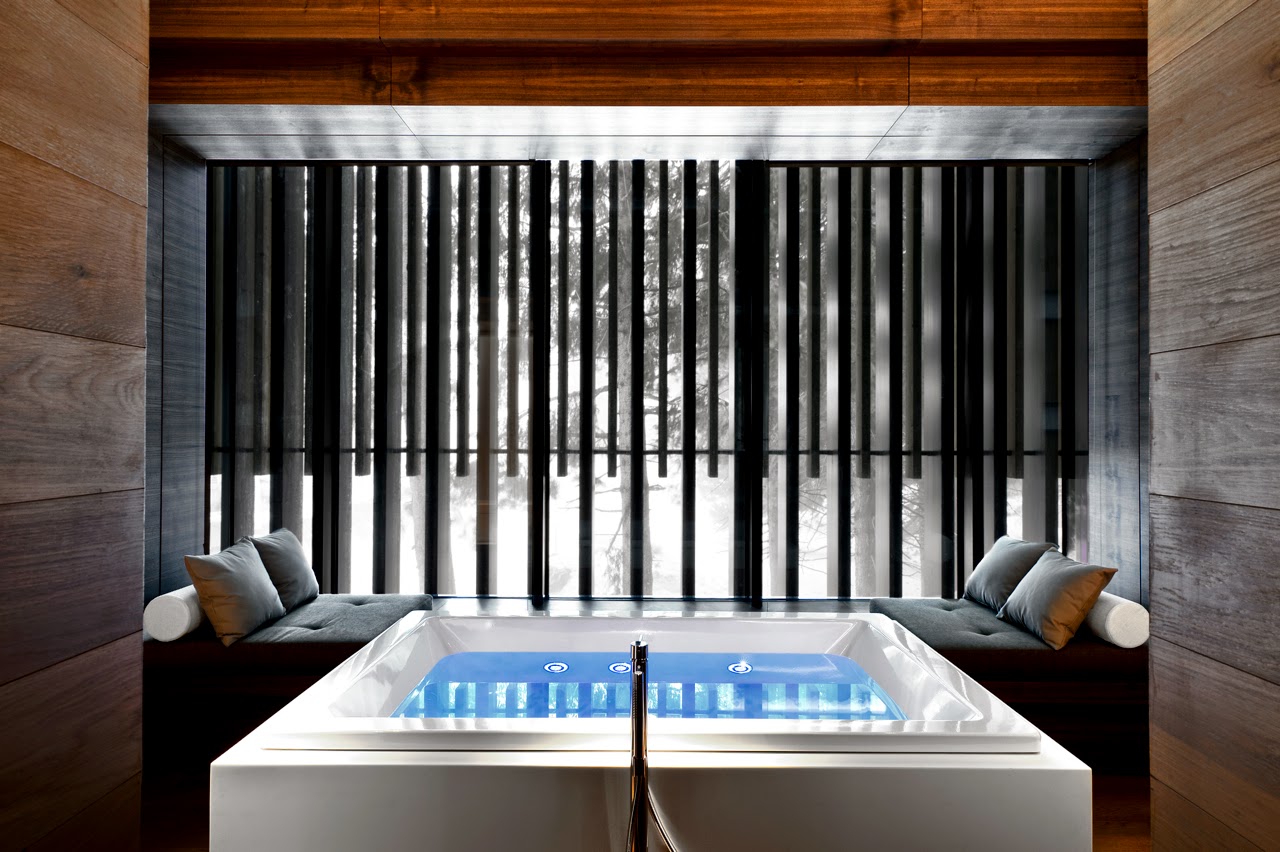
Building a hotel like The Chedi in Switzerland required an act of faith, as well as finance. Perhaps it will pay back investors in a couple of years, but right now is the time for spa-goers to go.
Conceived to anchor development of an entire new resort, including ski slopes, golf course, and hotels, The Chedi Andermatt is the first and only example of what the future holds. Arriving at the old village, trains taking excursionists across the Gotthard Pass stop at the small station, oblivious to what’s behind the hedges.
Like a sleeping beauty, Andermatt has been visited by intrepid travelers (Queen Victoria, James Bond), and hosted Swiss Army training.
All that is about to change.
The story is unlikely: Headquartered in Singapore, The Chedi locations were exclusively Asian. Enter entrepreneur Samih Sawiris, head of an Egyptian conglomerate, who was invited to develop the Alpine valley in 2005. The Chedi Andermatt opened late 2013; permits for construction of new ski lifts connected with the hotel came through in 2014.
On the site of a former health spa arose this hotel, costing 300 million Swiss francs. There are just 104 rooms and suites, 31 deluxe rooms, and 13 grand deluxe, plus 45 condos, and 196 fireplaces. At its heart, the 2,400-square-meter spa is so sumptuous that it would delight even the Romans. Yet on a summer day, the place is nearly deserted.
At its heart, the 2,400-square-meter spa is so sumptuous that it would delight even the Romans.
Spa manager Irmgard Kuchernig introduced a three-night “Rejuvenate in Style” package, and two-night “Alpine Adventure” to stimulate business. Summer room rates are between CHF 658 and CHF 809, offering a fabulous opportunity to enjoy the place prior to snow season.
Designed with an imposing crossover of traditional Swiss hospitality and Asian grandeur, the lobby has a direct view of the 35-metre swimming pool, glass-covered for year-round enjoyment. Hidden in the lower hydrotherapy area are hot pools set at three different temperatures, plus dry and wet saunas, and rain-showers, covering an area equally impressive. Relax; forget the weather outside.
Rooted in oriental philosophy, the spa features Asian-inspired treatments with three brands: REN, ila, and Alpienne, containing oils from plants and fruits found in the Andermatt region. The massage menu offers The Chedi Jade-Massage with touches of Lomi-Lomi mixed with Thai and Swedish techniques. Try the ila Tibetan Ku Nye, 90 minutes of stretching and lymphatic drainage.
Treated in one of 10 spa suites, I was left alone to enjoy plunge pools, hammam, or the outdoor lap pool. They also offer manicures, pedicures, and hair styling. Active guests work out on a full line of Technogym equipment with the Visio Web line, Kinesis wall, Power Plates, and Pilates machines.
Standing by is your sport butler, with Head bikes. In the future, this feature will be expanded to cater to ski enthusiasts. Surrounded by the Swiss Alps, the valley offers ideal snowy conditions, with a cable car taking skiers and snowboarders up Gemsstock Mountain to nearly 3,000 meters.
Dinner at the hotel’s massive restaurants is different. Separate menus from Asian and European kitchens are available, plus sushi and Japanese specialties in season. And a walk-in cheese room, offering tastings from huge wheels of unpasteurized milk produced in the canton of Uri. The Chedi Menu comprised Shanghai spring rolls or Maine lobster, tandoor-marinated monkfish, saddle of local veal with Alpine cheese yak tart, and dessert of Guanaja chocolate with caramelized cherries – for CHF 125.
Tempted to linger at fire pits for conversation, I headed for my room and soaking tub. Designed to blend Alpine chic with Asian zen, these rooms exert calm. Heated stone floors, separate rain shower and toilet, and a wall fitted for storage of a winter wardrobe are features. Overarching one wall, a ski scene.
Opening the first Chedi in Europe, the luxury hotel group General Hotel Management Ltd. (GHM) set high standards in design and hospitality. The unusual design by Jean-Michel Gathy, chief architect at Denniston International in Kuala Lumpur, and restaurants by Design Studio SPIN in Tokyo, assured a one-off place to relax and rejuvenate.
Editor’s Note: This originally published on September 8, 2014.
Bernard Burt
Health challenges led spa historian Bernard Burt to Canyon Ranch in Arizona, inspiring his 1986 book "Fodor's Healthy Escapes" for Random House. The co-author of "100 Best Spas of the World" (Globe Pequot), his byline has appeared in National Geographic Traveler, American Health, Spa Management Journal, and on Examiner.com. Based in Washington, DC, Burt is chairman emeritus of the Washington Spa Alliance and founding director of the International Spa Association.